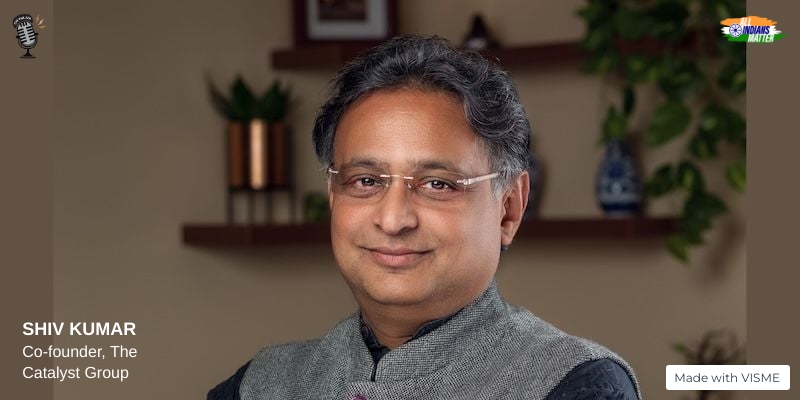Tushar Gandhi
January 23, 2023
“Let ‘Gandhism’ be destroyed if it stands for error. Truth and Ahimsa will never be destroyed; but if ‘Gandhism’ is another name for sectarianism, it deserves to be destroyed. If I were to know, after my death, that what I stood for had degenerated into sectarianism, I should be deeply pained.”
– MK Gandhi, Harijan, March 2, 1940
Wikipedia defines sectarianism thus: “…a political or cultural conflict between two groups which are often related to the form of government which they live under.” In an organisation, it would mean the person or the group which governs or heads it and the factionalism within.
Bapu founded several organisations and institutions, and various aspects of his ideology were developed and implemented in them. It all began in Phoenix, near Durban, in the Natal Colony of South Africa where Bapu established his first ashram. It was here that Bapu developed his idea of sustainable, self-reliant, simple, frugal, community living and fine-tuned his method of civil disobedience. Satyagraha was born here. It was here that he edited and published his first weekly newspaper, ‘Indian Opinion’, the medium for a dialogue with the community he was working for.
Later, he founded a temporary ashram near Johannesburg on land owned by his friend Herman Kallenbach. This was more of a satyagraha camp and so at the end of that satyagraha it was disbanded.
When Kasturba and Bapu left South Africa in 1914 for India, the Phoenix Settlement, as his first ashram was known, remained and the community continued to live and work there. After attempts to appoint persons to manage the community and the ashram, and edit and publish ‘Indian Opinion’ failed, Bapu sent his sons, first Ramadas and then my grandfather Manilal, to manage the tasks. Manilal took his bride Sushila along and their three children were born and raised there. Manilal ran Phoenix and ‘Indian Opinion’ till he passed away in 1955. Then his wife, my grandmother Sushila, managed Phoenix and published ‘Indian Opinion’ for five years.
There was a trust, but Manilal and later Sushila were always at the helm. They did it with passion and commitment. My grandmother was in India when the Apartheid regime orchestrated race riots, and destroyed and occupied the ashram. That day, I saw my grandmother lose the will to live; the light went out of her eyes. Later, some parts of Phoenix were rebuilt, but by then my grandmother was no more.
First my aunt Ela’s husband, Mewalal, headed the trust and after him Ela herself took over. Today, she, along with the trustees, manage the now-much-smaller ashram and run some wonderful programmes for the benefit of the neighbouring, very poor community.
We lost most of the land purchased by Bapu but the institution survives and is functional. There are no fights, no rivalries, no sectarianism at Phoenix.
A legacy of institutions
Back in India, Bapu established his first commune in Ahmedabad in the suburb of Kochrab, in a rented bungalow, and established a community comprising those who had accompanied him back from Phoenix and some new recruits to his way of life. Some family members also joined him. Trouble erupted when he admitted a family of untouchables and many in the ashram revolted. They faced a boycott from the neighbours too.
Bapu realised that he could not live in city and conduct his experiments in community, inclusion and compassionate living, so he purchased land across from the city on the banks of the Sabarmati. Here, he established Sabarmati Ashram. It was at various times called by different names: Harijan Ashram, Satyagraha Ashram, then Sabarmati Ashram and now Gandhi Ashram. Bapu formed a trust to manage it and from here he established ‘Navjeevan’, initially a periodical and then a publishing house for what he wrote. He also established Gujarat Vidyapeeth, a university to impart nationalist education to gram sevaks and satyagrahis. He founded a primary and high school for educating the children of those settled in his ashrams and from the neighbourhood. He opened it to the untouchables and once again faced a boycott, but he did not budge.
Most of the organisations survived. Sabarmati Ashram remained even after Bapu quit it when he left on the historic Dandi Kooch (March) in 1930, vowing not to return till he had won freedom for his people.
In Ahmedabad, Bapu founded Majoor Mahajan, India’s first organised labour union, initially of textile workers but later representing all. It survives but is not functional. A trust presides merely over the establishment as custodians of prime real estate.
After quitting Sabarmati Ashram, Bapu spent many years as a prisoner of the British before establising Sevagram Ashram at Wardha – his and Ba’s final home and a functioning model of his ideology, his dream of Gram Swaraj, of self-sufficient, self-reliant and productive villages. He formulated his model of basic education, Buniyadi Talim or Naee Taalim, here and several other associated ashrams, each doing specific work. He also founded Rashtra Bhasha Prachar, the Harijan Sevak Sangh and the Sarva Seva Sangh.
The rot within
I write this history of the institutions established by Bapu with a heavy heart and an acute sense of despair due to the present state of these organisations.
Sabarmati Ashram remained functional even after Bapu left. After 1930, several institutions were formed and at various times they were given charge of the ashram, which led to confusion about who the rightful custodian was. Bapu handed over the ashram to the Harijan Sevak Sangh and that should have been the only legitimate custodian. But the Harijan Sevak Sangh is in disarray, riven by factions, most of them inactive or too busy fighting among themselves. The current government has taken advantage of this and is on the verge of taking over Sabarmati Ashram. The trusts and trustees are too busy squabbling to unite and resist.
Navjeevan was lost when it was allowed to become a family heirloom. Jeetendra Desai managed Navjeevan for a long time, but in his final years he ensured that his son was appointed in his place. Very soon, one more institution established by Bapu turned into a private fief. Today, it is a lucrative piece of real estate and is exploited by the current head. Bapu had established Navjeevan to print and publish affordable literature but today it publishes expensive coffee-table books and literature unrelated to what Bapu had bequeathed it.
Now, Sabarmati is about to be lost.
Gujarat Vidyapeeth was lost because of factionalism and the avarice of some trustees. It is now headed by a Rashtriya Swayamsevak Sangh Ideologue and is completely infiltrated by Sanghis and their friends.
The Gandhi Smarak Nidhi is ridden with factions. It is fighting cases with most of the regional state institutions that were hived off from the parent body for a more decentralised organisation that would care and propagate the Gandhi Legacy. Raj Ghat and Gandhi Smriti are firmly under the control of the government and lost to the Gandhi legacy.
The Gandhi Peace Foundation in Delhi is also riven with factionalism.
The tragedy of Sevagram
Sevagram Ashram, meanwhile, is a hive of rivalries. I was invited to be part of its 75th anniversary celebrations a few years ago. When I reached Sevagram on the eve of the celebration, it was teeming with ‘Gandhians’. I was shocked by the reception; within minutes, I was beset by groups of Gandhians, each claiming to be the true custodian and inheritor of Sevagram. Each group controlled one segment of the ashram, and each claimed to be the legitimate claimants of Sevagram. Each group insisted that the next day I participate in the celebration they were hosting. The next day, from early morning, I was dragged from one corner to the other to celebrate the anniversary with the custodians of each part of the ashram. At each spot, the reigning faction bad-mouthed the others, abusing them and accusing them of being cheats and usurpers. I was dragged to at least eight such locations.
The hate and venom were scary and repulsive. That evening, I told the gathering that shamefully if someone was to distribute arms amongst the assembled people, there would be a bloodbath. No one liked what I said, but I couldn’t care less. They had to hear the truth.
Today, Sevagram has witnessed shameful episodes; the police had to intervene to subdue a meeting on the verge of turning violent. Police complaints have been registered by various factions against each other. Now the trust has ‘officially’ split – there are two presidents and two boards, one functioning from Sevagram and the other from Varanasi.
The politics in Gandhian organisations is vicious. Not one of them is spared from sectarian strife. Bapu would have lamented this. As Bapu’s death anniversary approaches, I can’t help but think that the three bullets Nathuram Godse fired at him would not have caused him as much agony as the repeated betrayal of his ideals and the corruption of his ideology by these so-called Gandhians. Forgive them, Bapu, for they know what they are doing – murdering your legacy.
Tushar Gandhi, great grandson of the Mahatma, is an activist, author and president of the Mahatma Gandhi Foundation. Reach him here: gandhitushar.a@gmail.com.






